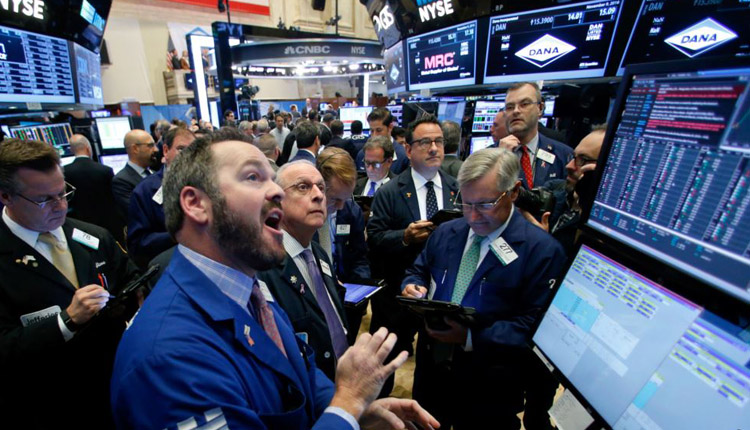The Dow Jones Industrial Average closed lower for the first time in five days on Tuesday, led by declines in Apple, while investors puzzled over conflicting reports over the progress of U.S.-China trade negotiations.
The 30-stock Dow fell 26.72 points to 25,887.38. Apple was among the worst performers in the index, sliding 0.8 percent. The S&P 500 ended the day just below breakeven at 2,832.57 while the Nasdaq Composite closed 0.1 percent higher at 7,723.95. Both the S&P 500 and Nasdaq rose as much as 0.7 percent while the Dow traded nearly 200 points higher at its session high.
Stocks started to roll over after Bloomberg News reported, citing people familiar with the matter, that U.S. officials are worried China may be pushing back against U.S. demands in the countries’ ongoing trade talks. The report also said Chinese negotiators are worried they have not received assurances that tariffs imposed on Chinese goods would be lifted once a deal is struck.
The major indexes briefly regained some of its footing after Dow Jones said the talks were in the final stages, noting China Vice Premier Liu He will travel to Washington in the next few weeks.
Caterpillar shares closed flat after rising as much as 1.3 percent earlier in the day. Boeing also pared gains, closing 0.3 percent higher. Both stocks are seen as trade bellwethers given their exposure to overseas markets.
Semiconductor stocks also fell from their highs of the day before recovering. The VanEck Vectors Semiconductor ETF (SMH) rose 1.2 percent.
Sentiment around the talks had turned more positive recently as investors expected a deal to be reached between late March and April. This, in turn, helped stocks rally this year.
Randy Frederick, vice president of trading and derivatives at Charles Schwab, said investors have grown complacent as this issue— along with Brexit in Europe— have yet to be fully resolved.
“I feel like the market is pricing in a best-case scenario on both of these things,” Frederick said. “This is a good time to be a little bit cautious rather than jumping on board with this rally as it is.”
“We’ve had a tremendous run in the S&P 500 since Dec. 26,” Frederick added. “We’re only a few percentage points away from an all-time high. I’m not saying we won’t see an all-time high this year, but to have it happen this quickly is a bit surprising.”
Stocks initially moved higher on Tuesday as the Federal Reserve kicked off its two-day policy meeting on Tuesday. Market expectations for a rate hike are at zero, with most investors pricing in no change in policy. However, investors will look for clues on the Fed’s economic outlook.
The Fed is also expected to lower its interest rate forecasts — or “dot plots” — to show little or no further tightening in 2019. With global economic growth appearing to slow, most market participants anticipate the U.S. central bank to adopt a cautious tone.
“My expectations are that the Fed will maintain their dovishness,” said Gregory Faranello, head of rates at Roberts & Ryan. “The eyes will be on the dot plot, so I expect some tempering there as well.”
“The one potential area of concern would be if the data was not cooperating with the pivot,” Faranello said. “When we look at what’s going on on a global basis, [Fed Chairman Jerome Powell] has pointed to the headwinds, and those headwinds are still there.”
At its January meeting, the Fed indicated it will be “patient” in raising rates. That shift came after the central bank raised rates in December, sparking concern the Fed may be tightening too fast.
Stocks have been on a tear since the Fed’s last meeting in late January. In that time, the S&P 500 has risen more than 5 percent. The broad index is also up more than 12 percent for 2019 in part because investors expect less policy tightening for the year.
The rally could extend further as several investors are still on the sidelines. A survey put together by Bank of America Merrill Lynch found the allocation of global stocks among respondents was the lowest since October 2016.
Given the market’s gains this year, investors underweight stocks could be enticed to increase their equity exposure, thus lifting prices even higher.
Source: CNBC


